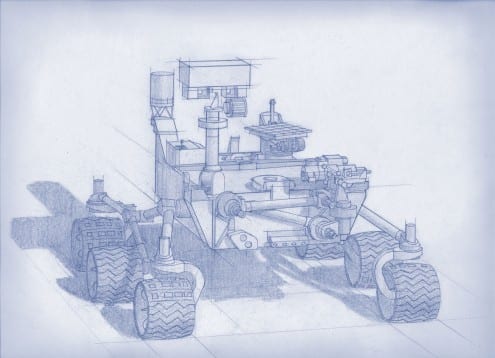Heading to Mars… again!
By Oli Usher, on 4 August 2014

Artist’s concept of Mars 2020, a proposed NASA mission to Mars. UCL is part of the consortium building the stereoscopic camera. Photo credit: NASA (public domain)
Mars 2020 is a planned NASA Mars rover, which will be built to an almost identical design to the Curiosity rover currently exploring the Martian surface. NASA has just announced the scientific payload, and it will include Mastcam-Z – a stereoscopic zoom camera which will be built by a consortium that includes UCL.
Mastcam-Z is the pair of square ‘eyes’ on the bottom of the rover’s ‘head’ as shown on this diagram.

Labelled diagram showing the location of the instruments on Mars 2020, a proposed NASA mission to Mars. UCL is part of the consortium building the Mastcam-Z stereoscopic camera. Photo credit: NASA (public domain)
UCL are responsible for developing a test environment for laboratory simulations of stereo measurements, and deriving accuracy estimates for rover operations from this. Prof Andrew Coates (UCL Mullard Space Science Laboratory), who is one of the co-investigators (scientific leaders) on the project will also play a leading role in science requirements specification and exploitation, and comparison with other missions including ExoMars. His scientific focus will be atmosphere-surface interactions.
Many congratulations to the whole team, and in particular to Prof Coates, on this success.
UCL is already leading the consortium building PanCam, the main panoramic camera on the European ExoMars probe, which will launch in 2018.
We’ll check back in on the progress of both of these projects as the design, construction and testing moves forward.
 Close
Close


